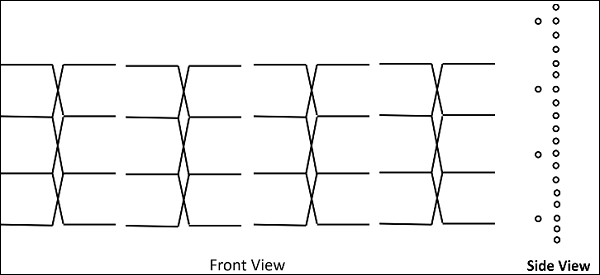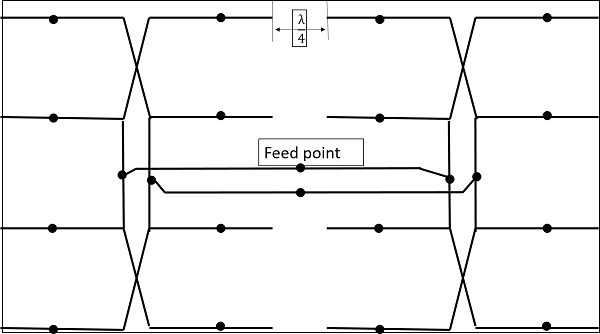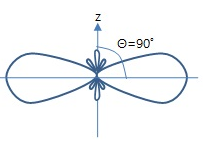
- Antenna Theory Tutorial
- Antenna Theory - Home
- Antenna Basic Terms
- Antenna Theory - Fundamentals
- Antenna Theory - Basic Parameters
- Antenna Theory - Parameters
- Antenna Theory - Near & Far Fields
- Antenna Theory - Radiation Pattern
- Isotropic Radiation
- Antenna - Beam & Polarization
- Antenna Theory - Beam Width
- Antenna Theory - Reciprocity
- Antenna Theory - Poynting Vector
- Types of Antennas
- Antenna Theory - Types of Antennas
- Antenna Theory - Wire
- Antenna - Half-Wave Dipole
- Antenna - Half-Wave Folded Dipole
- Antenna - Full-Wave Dipole
- Antenna Theory - Short Dipole
- Antenna Theory - Long Wire
- Antenna Theory - V-Antennas
- Inverted V-Antenna
- Antenna Theory - Rhombic
- Antenna Theory - Loop
- Antenna Theory - Helical
- Antenna Theory - Aperture
- Antenna Theory - Horn
- Antenna Theory - Slot
- Antenna Theory - Micro Strip
- Antenna Theory - Lens
- Parabolic Reflector
- Antenna Arrays
- Antenna Theory - Antenna Arrays
- Antenna Theory - Collinear Array
- Antenna Theory - Broad-side Array
- Antenna Theory - End-fire Array
- Antenna Theory - Parasitic Array
- Yagi-Uda Antenna Theory
- Log-periodic Antenna Theory
- Turnstile Antenna Theory
- Wave Propagation
- Antenna - Spectrum & Transmission
- Antenna - Types of Propagation
- Antenna - Lonosphere & its Layers
- Terms in Wave Propagation
- Antenna Theory Useful Resources
- Antenna Theory - Quick Guide
- Antenna Theory - Useful Resources
- Antenna Theory - Discussion
Antenna Theory - Broad-side Array
The antenna array in its simplest form, having a number of elements of equal size, equally spaced along a straight line or axis, forming collinear points, with all dipoles in the same phase, from the same source together form the broad side array.
Frequency range
The frequency range, in which the collinear array antennas operate is around 30 MHz to 3GHz which belong to the VHF and UHF bands.
Construction & Working of Broad-side Array
According to the standard definition, “An arrangement in which the principal direction of radiation is perpendicular to the array axis and also to the plane containing the array element” is termed as the broad side array. Hence, the radiation pattern of the antenna is perpendicular to the axis on which the array exists.
The following diagram shows the broad side array, in front view and side view, respectively.

The broad side array is strongly directional at right angles to the plane of the array. However, the radiation in the plane will be very less because of the cancellation in the direction joining the center.
The figure of broad side array with λ/4 spacing is shown below.

Typical antenna lengths in the broad side array are from 2 to 10 wavelengths. Typical spacings are λ/2 or λ. The feed points of the dipoles are joined as shown in the figure.
Radiation Pattern
The radiation pattern of this antenna is bi-directional and right angles to the plane. The beam is very narrow with high gain.

The above figure shows the radiation pattern of the broad side array. The beam is a bit wider and minor lobes are much reduced in this.